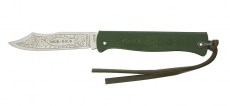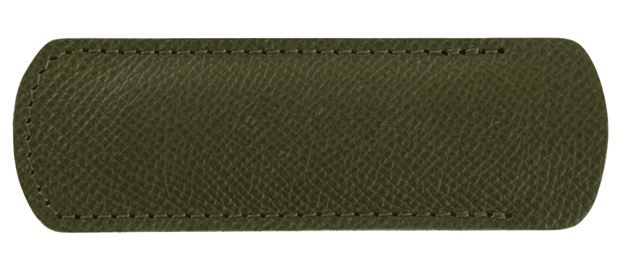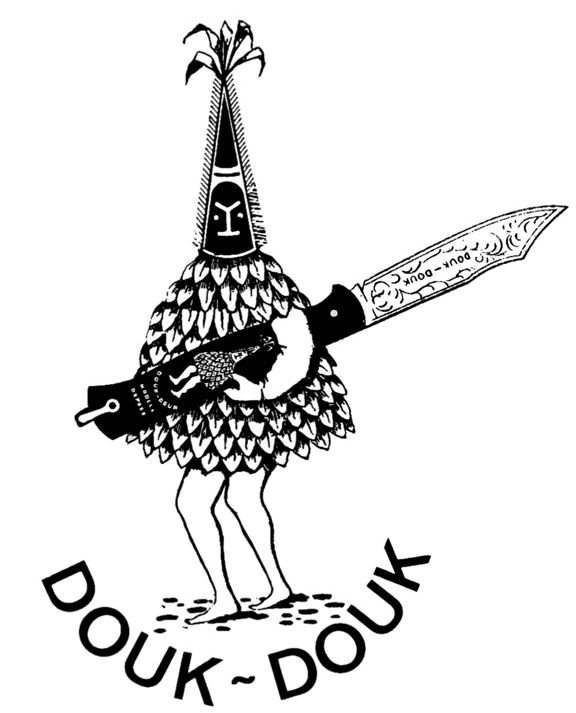

The external engraving of the douk-douk was created in 1929 by Gaspard Cognet of Cognet, Antoine & Gaspard for sales to France's colonies in Oceania. The handle depicts a "douk-douk", or Melanesian spirit incarnation. Cognet based the design on an engraving in an illustrated dictionary. Later other designs such as the "El Baraka" and "Tiki" were developed for other regional markets, particularly in French Algeria, and even south into Sub-Saharan Africa.
Originally intended as an inexpensive utility pocket knife for the ordinary working man, the popularity of the douk-douk caused it to be pressed into service as a weapon when necessary.[1] During the 1954-1962 FLN-led revolt in Algeria, the douk-douk was used as weapon of assassination and terror; Algerians who ran afoul of the FLN frequently had their noses removed by the knife's razor-sharp blade.[1] It could easily be converted from a folding-blade pocket knife into a useful fixed-blade dagger by the simple expedient of hammering the ends of the sheet-metal handle together behind the blade's bolster, locking the blade into the full-open position.




